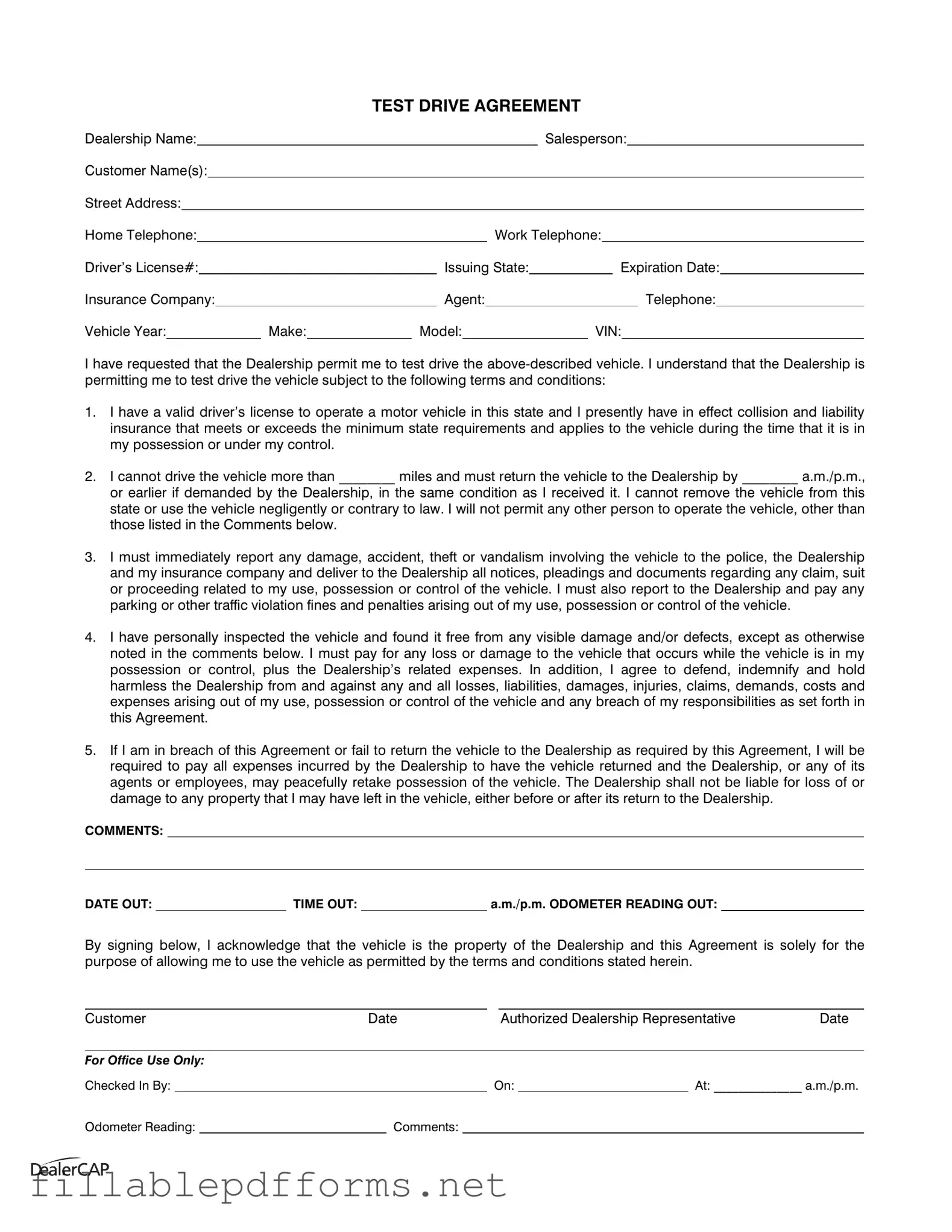The Test Drive form is a crucial document for both customers and dealerships, ensuring a clear understanding of the terms and conditions surrounding the test drive of a vehicle. It collects essential information such as the dealership name, salesperson, and customer details, including contact numbers and driver's license information. The form outlines the responsibilities of the customer, emphasizing the need for a valid driver's license and adequate insurance coverage. Specific mileage limits and return times are established, as well as the prohibition against using the vehicle in a negligent manner or allowing unauthorized drivers. The form also requires customers to report any incidents, such as accidents or theft, while in possession of the vehicle. Additionally, it includes a clause for inspecting the vehicle for visible damage before the test drive. Customers are held financially responsible for any damage incurred during the test drive and must agree to indemnify the dealership against any claims arising from their use of the vehicle. Finally, the form serves as a legal acknowledgment that the vehicle remains the property of the dealership, reinforcing the importance of adhering to the outlined conditions.
